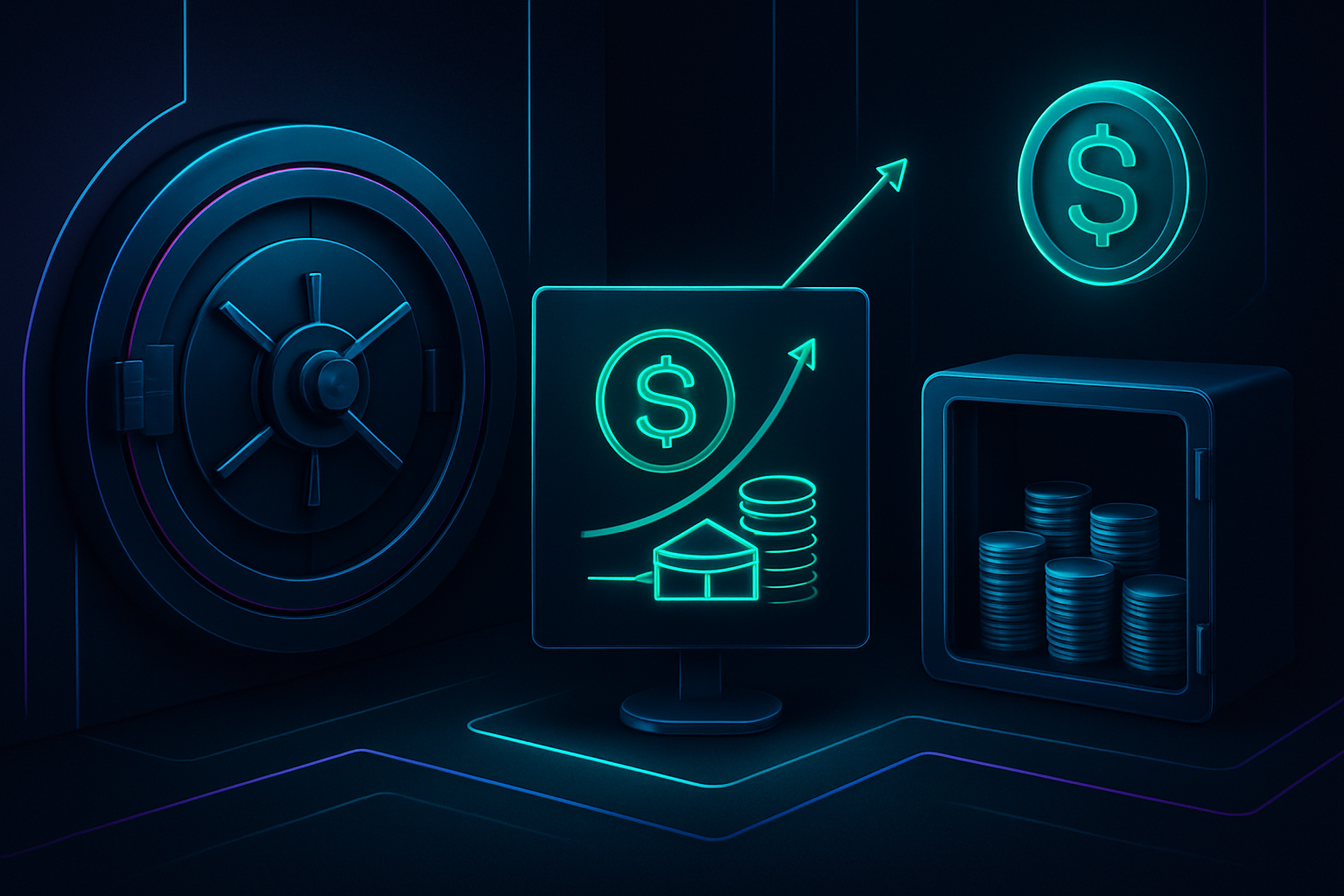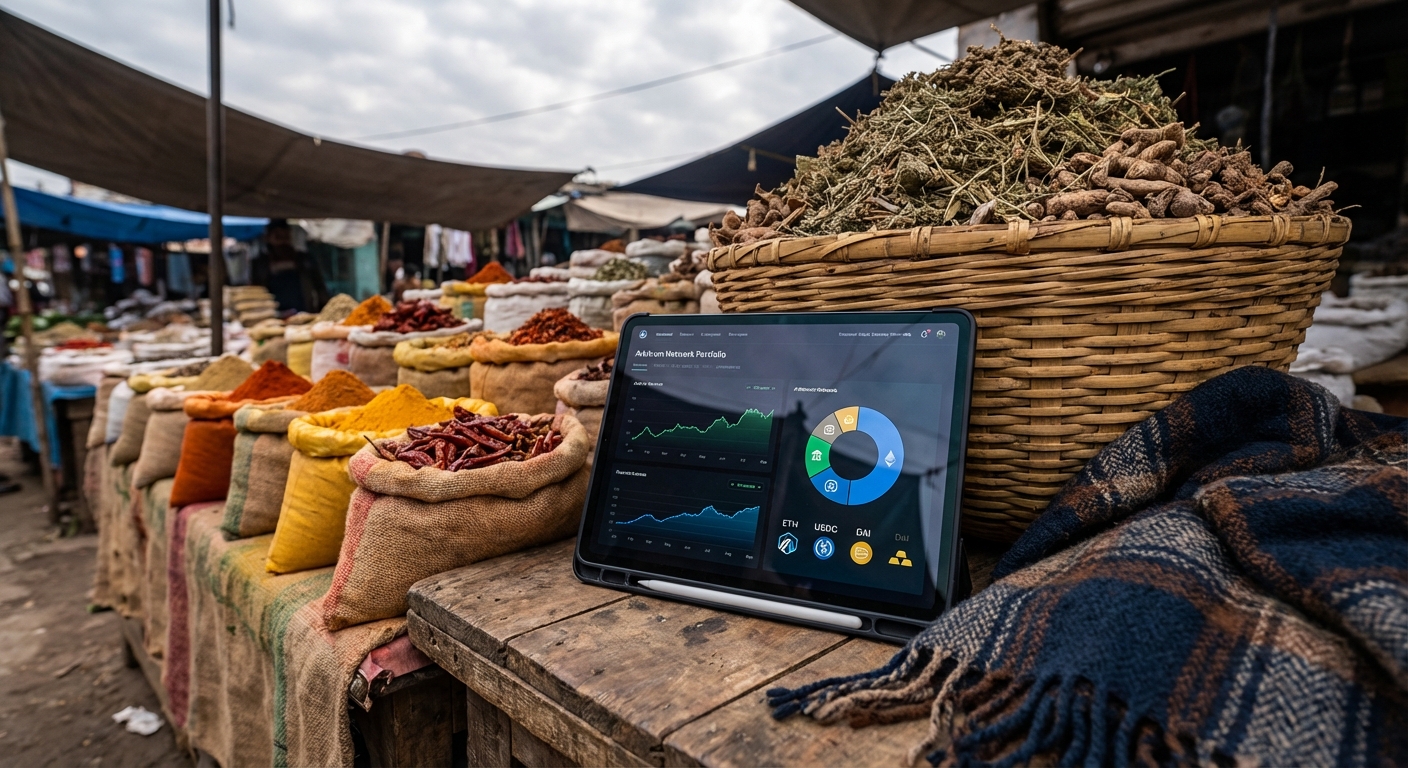
DAOs have come a long way from just holding crypto in multisig wallets. Today, the most forward-thinking decentralized organizations are putting their stablecoins to work by deploying them into on-chain vaults. This strategy is helping DAOs unlock sustainable yield, support operational expenses, and build financial resilience in unpredictable markets.

Why Stablecoin Vaults Are the Backbone of Modern DAO Treasuries
Stablecoins like USDC, DAI, and USDT have become the preferred base currency for DAOs. Why? Because they combine the low volatility of fiat with the programmability of crypto. But holding idle stablecoins isn’t enough, especially when innovation in DeFi has made it possible to earn consistent on-chain yield without exposing treasuries to wild price swings.
This is where DAO stablecoin vaults come in. Vaults pool assets together and deploy them into diverse protocols, lending markets, liquidity pools, or even tokenized real-world assets (RWAs) like U. S. Treasury bills. The result: DAOs can generate reliable returns while keeping risk in check.
Diversified Yield Strategies: Lending, RWAs and Liquidity Provision
Let’s break down how leading DAOs are optimizing their on-chain treasury management with stablecoin vaults:
Key DAO Stablecoin Yield Strategies Explained
-

Lending via DeFi Protocols: DAOs deposit stablecoins into platforms like Aave and Compound to earn interest from borrowers. For example, Gitcoin DAO proposed using Avantgarde’s DeFi Yield Vault on Enzyme to target annualized yields around 10%.
-

Real-World Asset (RWA) Integration: Some DAOs invest stablecoins in tokenized real-world assets such as U.S. Treasury bonds. MakerDAO is a leader here, allocating funds into Treasuries and private credit to back DAI with diversified, income-producing assets.
-

Liquidity Provision on DEXs: By supplying stablecoins to liquidity pools on decentralized exchanges like Curve Finance, DAOs earn trading fees and incentives while supporting market liquidity.
-

Automated Vault Strategies: DAOs use automated vaults, such as Morpho Labs’ vaults, to optimize stablecoin deployment. Polygon DAO considered using Morpho vaults for over $1 billion in idle stablecoins, aiming for a 7% annual return.
-

Diversified Stablecoin Portfolios: DAOs like Aavegotchi DAO create vaults on platforms like Enzyme to manage reserves across multiple stablecoins (USDC, USDT, LUSD, DAI), integrating with protocols like Morpho for conservative, low-risk yields.
- Lending Protocols: DAOs supply stablecoins to platforms like Aave and Compound, earning interest from borrowers. For example, Gitcoin DAO recently proposed allocating $5 million USDC to Avantgarde’s DeFi Yield Vault on Enzyme, targeting an annualized yield near 10%.
- Real-World Asset (RWA) Integration: MakerDAO has allocated large portions of its reserves into tokenized U. S. Treasury bonds and private credit pools. This approach leverages traditional finance yields while maintaining blockchain transparency.
- Liquidity Provision: By supplying liquidity to pools on Curve or Uniswap, DAOs earn trading fees plus incentives, boosting returns while supporting ecosystem liquidity.
The beauty of these strategies is diversification: by spreading assets across multiple protocols and asset types, DAOs can reduce risk and maximize capital efficiency.
“Staked stablecoins are an evolutionary layer that lets onchain dollars earn yield while preserving the familiar, spend-anywhere form factor. ”
Pioneers in Action: Real-World DAO Case Studies
The numbers speak for themselves when you look at recent moves by major DAOs:
- Polygon DAO: In December 2024, Polygon DAO considered deploying over $1 billion in idle stablecoin reserves using Morpho Labs’ vaults, a strategy targeting a conservative 7% annual return (roughly $70 million per year) for ecosystem growth.
- Aavegotchi DAO: Proposed launching an Enzyme vault managing diversified reserves (USDC, USDT, LUSD, DAI), integrating peer-to-peer lending via Morpho for enhanced but conservative yields.
This trend isn’t limited to blue-chip projects either; more mid-sized DAOs are following suit as best practices and tools become more accessible. For a deeper dive into how these strategies are reshaping decentralized treasury management in 2025, check out our guide on stablecoin vault innovations for DAOs this year.
The Governance Layer: Risk Management and Transparency Matter More Than Ever
No yield strategy is complete without robust risk controls, and this is where decentralized treasury best practices shine. Leading DAOs use multi-layered governance frameworks that include:
- Diversification across protocols and asset types to avoid single points of failure
- Audited smart contracts and security reviews before deploying funds
- Maintaining liquid reserves for operational needs so yield generation doesn’t impact day-to-day activities
- Transparent on-chain reporting with regular community updates to foster trust and accountability
This approach ensures that as yields grow, so does stakeholder confidence, a crucial ingredient for any successful decentralized organization.
For DAO operators and treasury managers, the next frontier is not just about finding the highest yield, but building a system that can withstand shocks and adapt to changing DeFi landscapes. The most effective DAOs are investing in automation and tooling, think one-click vault integrations, real-time analytics dashboards, and automated reporting to keep their communities informed. This allows teams to focus on strategy rather than manual operations, all while ensuring assets are always working efficiently.
Emerging Trends: Vault-as-a-Service and Cross-Chain Yield
We’re seeing a rapid evolution in the types of products available for DAOs seeking sustainable yield. Vault-as-a-Service (VaaS) providers now enable even smaller DAOs to access curated, risk-managed yield strategies without needing in-house DeFi expertise. Platforms like YieldNest and Morpho Labs are making it as simple as clicking “deposit” to access diversified strategies spanning lending, RWAs, and liquidity provision, no complex setup required.
Meanwhile, cross-chain infrastructure is unlocking new opportunities. With rollups like Arbitrum and bridges to other ecosystems, DAOs can deploy stablecoin capital where yields are most attractive or risks are lowest, often with just a few transactions. The Arbitrum treasury program is a notable example, offering DAOs streamlined access to vetted vaults across multiple chains.
Top Tools for DAO Stablecoin Vault Management
-

Enzyme Finance: A leading on-chain asset management platform, Enzyme enables DAOs to create and manage stablecoin vaults with customizable yield strategies, transparent reporting, and robust access controls.
-

Morpho Labs Vaults: Morpho offers curated vaults that optimize stablecoin yields through peer-to-peer lending, as seen in Polygon DAO’s large-scale deployment for sustainable returns.
-

Avantgarde DeFi Yield Vault: Used by DAOs like Gitcoin, Avantgarde’s vaults on Enzyme provide diversified stablecoin yield strategies with on-chain transparency and automated risk management.
-

Safe{Wallet} x Kiln DeFi: Safe{Wallet} integrates with Kiln’s DeFi vaults, allowing DAOs to earn stablecoin yield with one-click deposits and seamless treasury management.
-

YieldNest Vault-as-a-Service (VaaS): YieldNest’s VaaS framework lets DAOs and protocols create custom yield vaults for stablecoins, offering flexible strategies and institutional-grade infrastructure.
-

Curve Finance: As a leading decentralized exchange, Curve allows DAOs to provide stablecoin liquidity, earning trading fees and incentives while maintaining exposure to low-volatility assets.
-

MakerDAO RWA Vaults: MakerDAO’s integration of real-world assets, such as U.S. Treasury bonds, enables DAOs to diversify stablecoin treasuries and earn yield from tokenized traditional finance instruments.
Challenges Ahead: Security and Regulatory Uncertainty
No discussion of DAO stablecoin vaults would be complete without acknowledging the risks that come with innovation. Smart contract exploits remain a persistent threat, even well-audited protocols can be vulnerable if governance or code reviews lapse. That’s why it’s vital for DAOs to prioritize ongoing security audits and maintain conservative exposure limits per protocol.
Regulatory clarity is another evolving factor. As more DAOs allocate funds into tokenized U. S. Treasuries or private credit pools, questions about compliance and reporting will continue to surface. Staying agile, both legally and technically, will separate resilient treasuries from those caught off guard by policy changes.
The Path Forward: Sustainable Yield as DAO Infrastructure
The bottom line? Sustainable on-chain treasury yield isn’t just a nice-to-have, it’s becoming essential infrastructure for any serious decentralized organization. By leveraging diversified stablecoin vaults, robust governance frameworks, and emerging VaaS tools, DAOs are setting themselves up for long-term viability regardless of market volatility.
If you’re ready to go deeper into how these trends will shape the next wave of decentralized treasury management, including more on automation, analytics tools, and regulatory best practices, explore our comprehensive resource at how stablecoin vaults are revolutionizing on-chain treasury management for DAOs.






